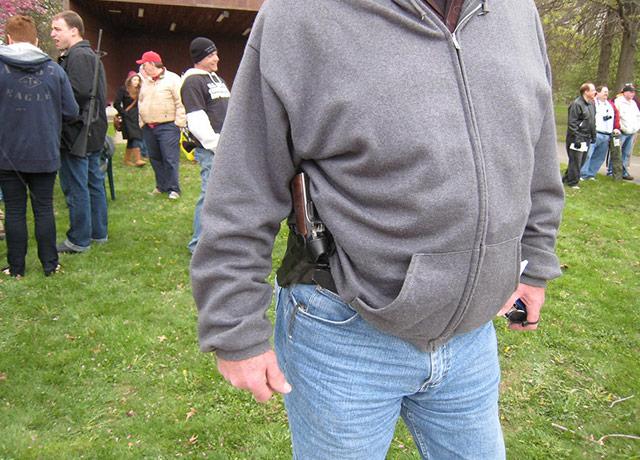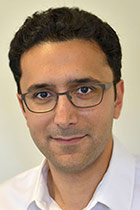
Study: 3 million Americans carry loaded handguns daily
Most are male, and cite protection as primary reason; 'significant' public health implications, researchers say.Media Contact: Bobbi Nodell, bnodell@uw.edu, 206.543.7129

An estimated 3 million adult American handgun owners carry a firearm loaded and on their person on a daily basis, and 9 million do so on a monthly basis, new research indicates. The vast majority cited protection as their primary reason for carrying a firearm.
Researchers from the University of Washington, the University of Colorado, Harvard University and Northeastern University produced the study, published October 19 in the American Journal of Public Health.
It is the first research in more than 20 years to scrutinize why, how often, and in what manner U.S. adults carry loaded handguns. It also examines how concealed handgun-carrying behavior differs across states, depending on their laws.

“Carrying firearms in public places can have significant implications for public health and public safety,” said lead author Dr. Ali Rowhani-Rahbar, an associate professor of epidemiology at the UW School of Public Health. “An important first step to examining the consequences of firearm carrying at the national level is an accurate measurement of the occurrence of this behavior and characterization of those who engage in it.”
Compared with handgun owners who did not carry, those who did report carrying handguns tended to be younger, and more often male, live in the southern United States, have grown up in firearm-owning households, self-identify as politically conservative, and own more than one type of firearm.
Rowhani-Rahbar and doctoral student Vivian Lyons collaborated with Drs. Matthew Miller of Northeastern, Deborah Azrael of Harvard, and Joseph Simonetti of Colorado. They reviewed handgun-carrying behavior of 1,444 gun owners, using data from a 2015 nationally representative survey designed by Miller and Azrael.
“It was important to study handgun carrying because about 90 percent of all firearm homicides and nonfatal firearm crimes for which the type of firearm is known are committed with a handgun,” said Rowhani-Rahbar, who is also an adjunct assistant professor of pediatrics at the UW School of Medicine.
Among the findings: 80 percent of surveyed handgun owners who carried their handgun had a concealed-carry permit, and 66 percent said they always carried their handguns concealed, compared with 10 percent who said they always carry their weapons openly.

When comparing handgun-carrying behavior with corresponding states’ laws, researchers found that proportionally fewer handgun owners carried a concealed handgun if they lived in a state whose laws afforded greater discretion to issuing agencies in the review of concealed-carry applications. Some owners nevertheless reported carrying a concealed handgun without a permit in states in which doing so was illegal.
State laws on handgun carrying have become less restrictive over the last 30 years. Many states that formerly gave local governing bodies the authority to review applications have moved to constrain local authorities’ discretion, thereby easing the permit process for adult residents.
In this same time period, the number of U.S. concealed-carry permit holders has increased significantly.
Rowhani-Rahbar said more research is needed to comprehensively evaluate the impact of increasingly permissive firearm-carry laws. Future studies should focus on analyzing how different concealed-carry laws influence carrying, and characterizing illegal carrying behavior among those who have been denied permits.
The study was funded by the Fund for a Safer Future and the Joyce Foundation.
For details about UW Medicine, please visit https://uwmedicine.org/about.
Tags:legislation